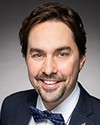Thank you, Mr. Chair, for the invitation to appear today before this Standing Committee on Canadian Heritage and its study of safe sport in Canada.
As an introduction, my name is Suzanne Paulins. I'm the acting chief executive officer for Swimming Canada. I joined Swimming Canada six years ago as the senior manager, domestic operations, and then moved to the director of sport development role in October 2020. In March 2021, I took on additional responsibilities as director of operations and sport development, which I held until last week, when I stepped into the acting CEO role due to the personal medical leave of CEO Ahmed El-Awadi.
Prior to joining Swimming Canada in a staff position, I'd been involved in the sport of swimming since 1974. I swam competitively with my hometown club for approximately eight years. When my time as an athlete ended, my involvement in the sport of swimming did not. In 1987, I was a summer student intern with the provincial section, and then in 2000, when my then seven-year-old began competitive swimming with our local club, followed by her two brothers, I became involved in the sport again.
As my three swimmers developed within the sport, so did I. I was on our club board for 18 years, serving eight years as president. I was on the provincial section board for eight years and also became heavily involved in officiating swimming competitions, first locally, then moving to provincial and national competitions and, finally, receiving an appointment to the international FINA federation list as a referee in 2017.
The sport of swimming is a passion and has been for my entire life. My children are my “why”. My purpose from the beginning has been to ensure that we create and maintain an environment where everyone can enjoy the sport that means so much to me. My children, now adults, are all still involved in the sport, with one still competing and the other two working as coaches within a varsity environment.
I have seen and experienced the evolution of safe sport from the club level through to the provincial level and now at the national level. Many of the stories we've heard from athletes across the country from a variety of sports have been heartbreaking. We all have an obligation to do better: to work to create safe and inclusive environments where every participant at every level feels that they can participate in sports safely.
Swimming Canada has worked and will continue to work on creating and maintaining a safe and inclusive environment. Swimming Canada introduced safe sport initiatives in 2016, with the hiring of a safe sport coordinator and the introduction of our safe sport framework, which included the pillars of education, prevention and response, and the development of policies and procedures to support the framework. An independent third party was also introduced to manage safe sport complaints. Last month, Swimming Canada hired a director of people and culture, strengthening our commitment to people and culture in our sport.
Over the past six to seven years since the introduction of the framework, we have continued to try to build awareness in working with the provincial sections. Each provincial section is also building their safe sport framework.
We continue to learn and we continue to grow. We currently have a campaign via Twitter called “Safe Sport Monday”, where over the course of eight weeks we are raising awareness and educating our community on what safe sport is and sharing different aspects of safe sport, including open and observable environments, “See Something? Say Something”, and mental health.
Swimming Canada understands the need to hear the athlete's voice. Several members of the board were athletes, one as recently as six to seven years ago on the national team. We are also current rewriting our bylaws to formally include a retired athlete on the board, beginning in September. We have an active athletes council, one that includes current and former Olympic and Paralympic team athletes. Over the past several years, we have several examples of athlete well-being prioritized ahead of results.
Sport is an important fabric in the life of Canadians. Parents, athletes, coaches, officials, administrators, provincial sport bodies, national sport bodies and all partners have a part to play in making sport a safe place. Much has been done, and there is still much work ahead. Education and awareness across all levels are crucially important, as is a coordinated approach across all levels and through a central point of leadership.
To go back to my why, at its simplest, it is and was my kids, but it is more than that: It is the people, every person in our sport—all sports—and creating the environment where each and every one can enjoy a safe and inclusive experience.
Thank you, Mr. Chair.



